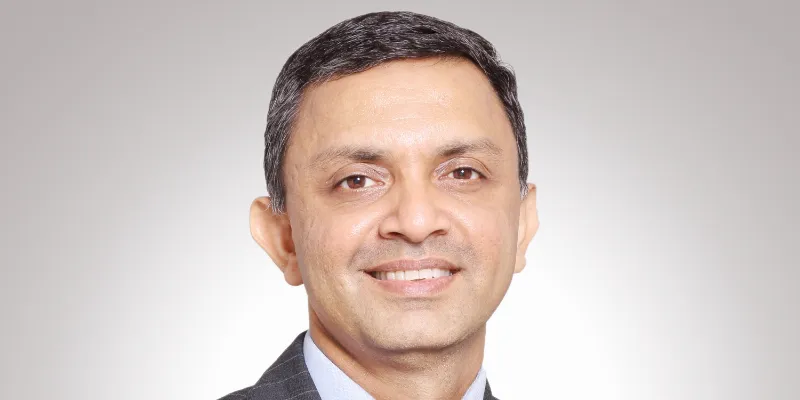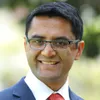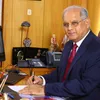How a Chennai company became India’s largest integrated diagnostic service provider
Medall started in 2009 when serial entrepreneur Raju Venkataraman acquired a leading imaging and diagnostics centre in Chennai. Today, it claims to be India’s largest integrated diagnostic service provider.

Arjun Ananth, CEO, Medall
Over the last few years, India’s middle class expanded and saw rising disposable incomes, enabling them to spend on healthcare. This meant big opportunities for the sector, especially for companies in the diagnostic services industry.
In 2009, serial entrepreneur Raju Venkataraman started in Chennai to capitalise on this growing demand for diagnostic services in India. His vision was to provide radiology imaging services and other diagnostic services to customers, and to provide a high level of diagnostic confidence to referral physicians.
Arjun Ananth, Medall’s current CEO, says:
“Raju and private equity firm Peepul Capital came together over 10 years ago to start Medall. The company was started when Raju acquired Precision Diagnostics in Chennai, a leading imaging and diagnostics centre in the city.”
Over the last decade, India witnessed a rise in health consciousness and improved awareness of chronic diseases. Hence, diagnostics became critical to healthcare services as accurate diagnosis and accurate treatment go hand in hand.
Riding this wave, Medall claims it has established itself as India’s fourth largest diagnostic services provider and the largest integrated diagnostics provider. The 2,500-employee firm says it has captured over 40 percent of South India’s market share for diagnostic services.
Since 2009, Raju led the company to these heights as its CEO and MD. Before Medall, the IIT-Madras alumni had been involved in several entrepreneurial ventures, including Sherpa Business Solutions in the US, and technology companies RevIT and Vetri Systems in India.
Arjun, who was on the company’s board as a Peepul Capital representative, took over as CEO in November 2019. In an interaction with SMBStory, he explains how Medall grew so much in just 10 years.
Edited excerpts of the interview.
SMBStory: What kind of diagnostic services do you offer?
Arjun Ananth: We offer diagnoses of two types. One, where we draw blood for diagnosis, and two, where we scan the body, such as CT, X-ray and ultrasound scans. Most diagnostics companies, including us, use non-invasive methods for diagnosis.
SMBS: How did you build your network of diagnostic service centres?
AA: We are present in nine states across India. Soon, we will enter our 10th state. We have 1,600 points of presence and over 180 labs across the country. We built our presence across metro and non-metro cities in the states we entered, and our strategy was to enter Tier I-IV areas.
For example, in Tamil Nadu, we not only have a significant presence in Chennai but also in Kannur and Madurai. Medall also built its presence in smaller districts like Tiruvannamalai and Nagapattinam.

A Medall lab
SMBS: How do your service centres work?
AA: The basic purpose of Medall’s diagnostic centres is to tell the patient what’s wrong with them. Patients walk in because of two reasons. One, their doctor has asked them to get a diagnosis, and two, they want to know their health status themselves.
After we do the diagnosis and generate the report, patients take the reports and go to their preferred doctors for treatment. In a way, this makes us unbiased and differentiates us from larger hospitals that offer both diagnostic and doctor services.
We also came up with a home collection service where blood can be collected at the patients’ homes.
SMBS: Where do you source medical and diagnostic equipment from?
AA: Almost all our equipment is sourced locally, but we are now buying more from international companies and multinationals. Some examples are Philips, Siemens, Mindray, and other companies that have entered India.
Based on the equipment we source, the centres cost anywhere from a few lakh rupees to a couple of crores to set up. For instance, if a centre has all sorts of available technology, scanning and imaging machines, and MRI and CT scan machines, the cost of setting up definitely runs in crores.
SMBS: How do you decide the pricing for the services offered by Medall?
AA: Our services are designed to provide value to a consumer, and therefore, we have come up with diagnostic services bundles. For instance, if a smoker has to undergo some tests, we offer a bundle package that comprises these tests, and this works out to a lower cost than what other service providers offer.
There could be a small difference in price for the same test based on location. A consumer who takes a test in a Tier I city may pay a slightly different price compared to someone taking the same test in a Tier II city. However, our service bundles or packages cost the same across all our centres.
SMBS: Who runs the centres and maintains the equipment?
AA: We hire people who have the required educational qualification in the field. Our equipment is fairly advanced, and so we train our staff as per industry standards and keep them updated with new trends in the diagnostics space.
The devices are usually maintained by the Original Equipment Manufacturers (OEMs) or the suppliers.
SMBS: Who are your customers?
AA: Anyone in need of diagnostic services is technically our customer. We deal with individual customers, corporates, government bodies, and other organisations. We have customers walking in as part of corporate schemes or government schemes, and we treat everyone equally.
For instance, we have tie-ups with the Jharkhand government, and we do many contracts with large corporations. We use an advanced ERP system, developed in-house, to track and manage all these service offerings.

A Medall diagnostic centre
SMBS: How are you using digital platforms in your business?
AA: While we have presence on social media channels such as Facebook, Instagram and Twitter, we use digital platforms such as emails to reach customers and share reports with them.
There is a slight difference in our digital approach between metro and non-metro cities. For example, for patients in the interiors of Karnataka or Andhra Pradesh, we use vernacular digital platforms to communicate with our customers.
SMBS: What were some challenges and learnings in the company’s journey?
AA: The company is still young and we have often tried to face all challenges by making the most of them. Whenever we participate in events, we always learn something new, which could be worth adopting and implementing.
With these changes, we are constantly evolving. In the future, we will continue to add to our integrated approach towards diagnostic services.
We also look at some competitors to see what they are doing and how we can do better. At Medall, we also want to double our revenue figures in the next few years.
(Edited by Saheli Sen Gupta)









